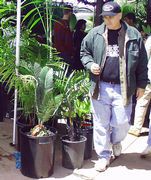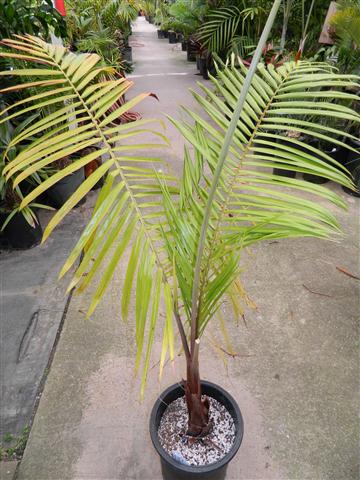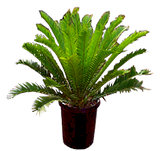From Shade Or A Greenhouse Environment
by Phil Bergman
Have you just purchased palm trees from a greenhouse or shade-grown environment? This article tells you how to adjust the purchased palm trees to your new environment, thus eliminating burn to the leaves.
Plants from shade grown areas or greenhouses must be acclimated carefully before planting or placing outdoors, especially in hot or sunny locations. Also, many species should never be grown in full sun. If you don’t acclimate, you may get leaf burn from the bright sunlight. This can even happen in winter.
Therefore, when purchasing a plant, ask for sun requirements on the species you are buying. Knowing a plant’s requirements can avoid any damage to the plant by incorrectly giving it the wrong cultural conditions or too much sun if it is shade-loving. If your plant is a shade-loving plant, you can typically just plant it immediately into the shade as it will not “sunburn” if it doesn’t get hit by the sun. If your plant is suited to and destined for full sun, and if it is coming from the greenhouse or shade house, we recommend following the steps described below.
1. After purchasing plant, put it into heavy shade at your location. This could be under a dense tree, under shade cloth, or on the north side of a house/structure where it is protected from sun. Water it regularly to keep the plant moist and occasionally spray the leaves with water.
2. In about three weeks after purchase, begin to acclimate the plant into mild filtered light. I.e., give it a little light. This is accomplished by moving the plant to a somewhat brighter area under the tree or to an area with slightly more sun. Leave the plant here for three more weeks.
3. After the previous three weeks, (now 6 weeks after purchase), in a gradient fashion every week or two move it into a bit more sun.
4. For 3-6 more weeks, (now 9 to 12 weeks after purchase), move sun-loving species into more and more sun weekly until you reach the sought-after sun exposure that it will eventually have.
Note: Observe foliage daily. If any type of leaf discoloration (typically brown colored) or significant bleaching of the color of the leaves is observed (represents leaf burn), put the plant back into filtered light and attempt this step at a later date. If there is no burn after one week of any given sun exposure, continue with the acclimation process until it is ready to be planted in the ground.

5. An Alternative Method One can construct a “teepee” type of affair above the plant and hand shade cloth over the plant. This can be done with plants in their original container or with plants actually planted into the ground. Make sure that the shade structure you build drapes over the sides to prevent light entering at an angle and burning the plant.. Typically 4 poles are used. Over the next few months cut holes into the cloth to gradually let in more light until almost full light is coming through. Eliminate the structure when acclimation is complete. This technique offers the advantage of establishing the plant while acclimating.
Variables: These recommendations are meant to be a general guide. Your particular growing environment might require different guidelines. For instance, if you are in a very hot interior area, the time frame might be extended. Or, if you are subject to “Santa Ana” conditions (hot dry air), special care must be taken to avoid burning the leaves. And, some plants take longer than others to acclimate.
Cycads typically acclimate more quickly to sun than palms. Therefore, one could do the above steps in somewhat less time. Some species acclimate more quickly than others, but the technique above is conservative and safe. During the late fall and winter months there is less chance of sunburn, but it can definitely still occur. Also, during these months you must also protect the plant from cold damage. If you have any questions about this acclimation process, feel free to call us.

One final comment: Some wish to just plant purchased plants right away and put up with the sunburn. Typically, such plants grow through this and by the following year have acclimated new leaves to the sun. I’d estimate a quarter of our customers do this and over time the plants do just fine.
(End)

- PALM TREES, CYCADS & TROPICAL PLANT BLOG - October 1, 2020
- TRACHYCARPUS
The Windmill Palm - September 30, 2020 - FAN PALMS –
PALMS WITH CIRCULAR LEAVES - September 29, 2020












